Embodied RF Ecologies
Following the quest to embody the invisible transmissions that surround us, this wearable explores the use of an IC mixer circuit to down convert the emissions from the NOAA weather satellite and make them audible. By continuing the research into textile antennas and fractal geometry as a means to detect radio-frequency (RF) transmissions, this project aims
to speculate about the body as an agent of power in a post-capitalist world, and to re-interpret transmission technologies through handmade crafting techniques.
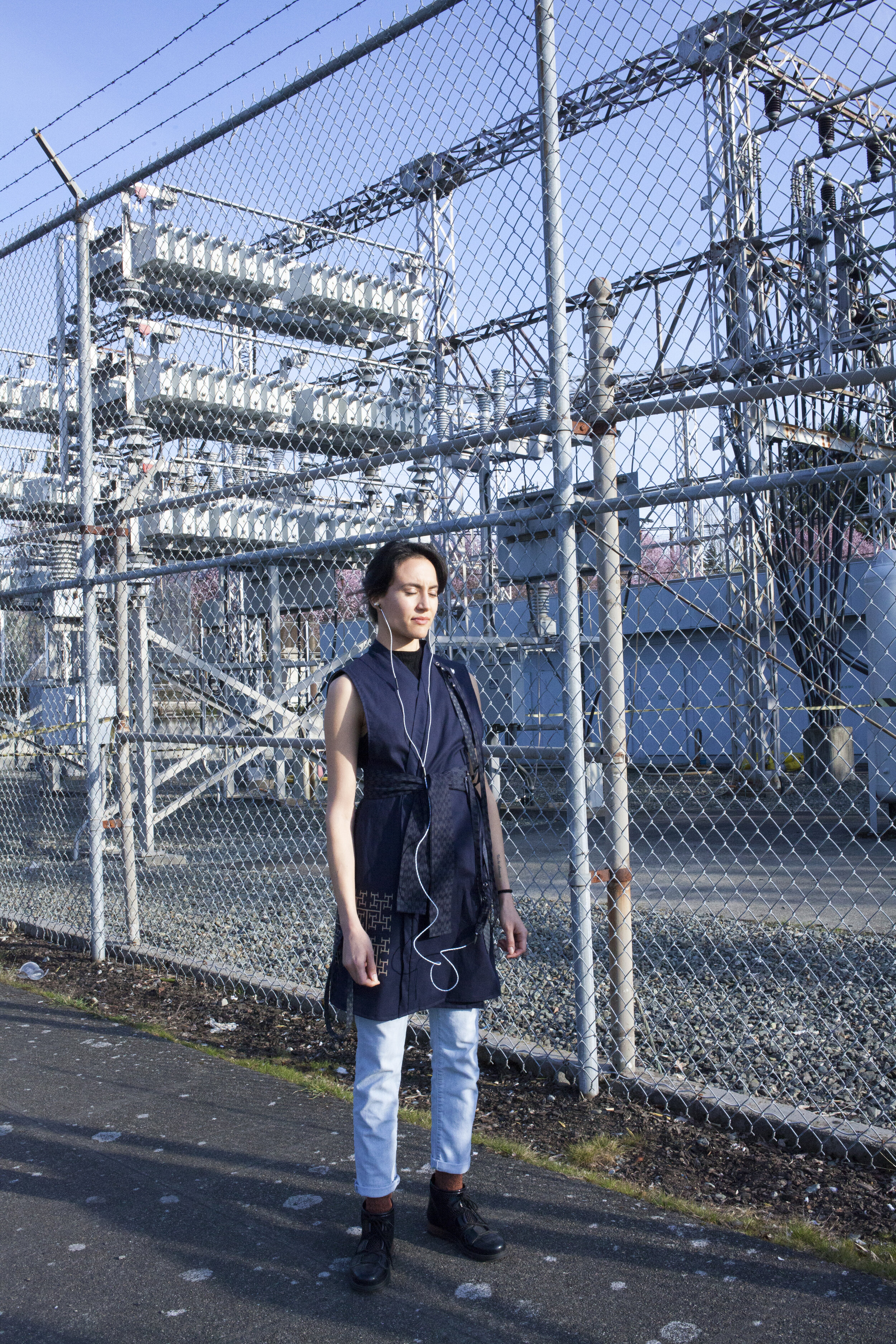

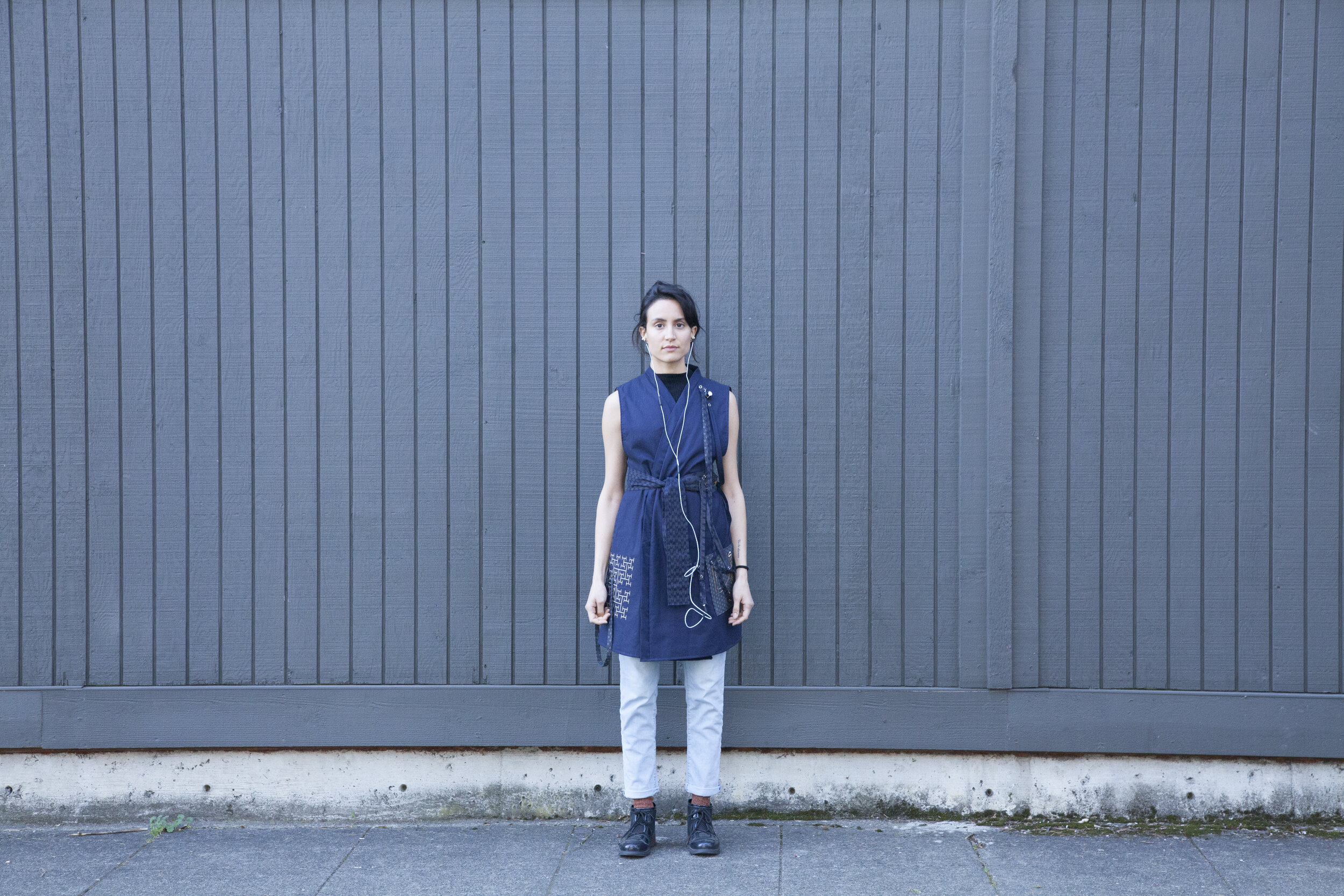


Antennae and soft-circuit development
The wearable features two different fractal antennas, an H-Fractal in its fourth iteration and a Peano-Gosper Curve (aka flowsnake) also in its fourth iteration. Both designs have been generated through a custom Processing script and then vectorized and laser cut on SaniSilver fabric. The specific selection of the material, the fractal shapes and iterations, as well as their size are a result of a numerous experiments of producing these antennas and measuring them using a Vector Network Analyzer (VNA) at the Reynolds Lab of the University of Washington with the valuable help of PhD student James Rosenthal. The antenna measurements were used to determine the resonant frequency of the antennas which could allow for picking up the NOAA satellite signals which are transmitted at around 137MHz. In order to ensure an efficient reading the antennas were grounded by creating a sandwich layer with conductive fabric attached to the 0V point of the soft-circuit.
Circuit schematic for the down-converter circuit using the LM386 opamp.
The soft-circuit is hand-embroidered with brass conductive thread from Karl Grimm and it features a down-converter circuit using the NE602 double balanced mixer and oscillator IC, and also a signal amplifier using the TDA2822M IC dual low voltage power amplifier IC. All the circuit traces are made with either conductive thread, or fabric wires (handmade using copper taffeta conductive fabric) and all the connections are made with snaps in order to be able to be used in a performative context, by snapping and unsnapping connections, and interchanging the cables similarly with a modular synthesizer.
Antenna amplifier schematic using the TDA2822M IC.
Although the circuit was tested in the lab using a signal generator transmitted at 137MHz, the original intention of picking up NOAA transmissions was never achieved. It did though set the basis for further exploration into RF sensing, and specifically was the precursor of the Listening Space project and the exploration of software-defined radio. The analog circuitry used in this project is able to pick up a variety of different radio signals which are mixed together depending on the wearer’s movement and directionality, and there is also an on-textile tuner (a trimmer capacitor) located on the side pocket which can be used to tune the antenna signal, as well as a knob on the left shoulder which can adjust the amplifier volume.
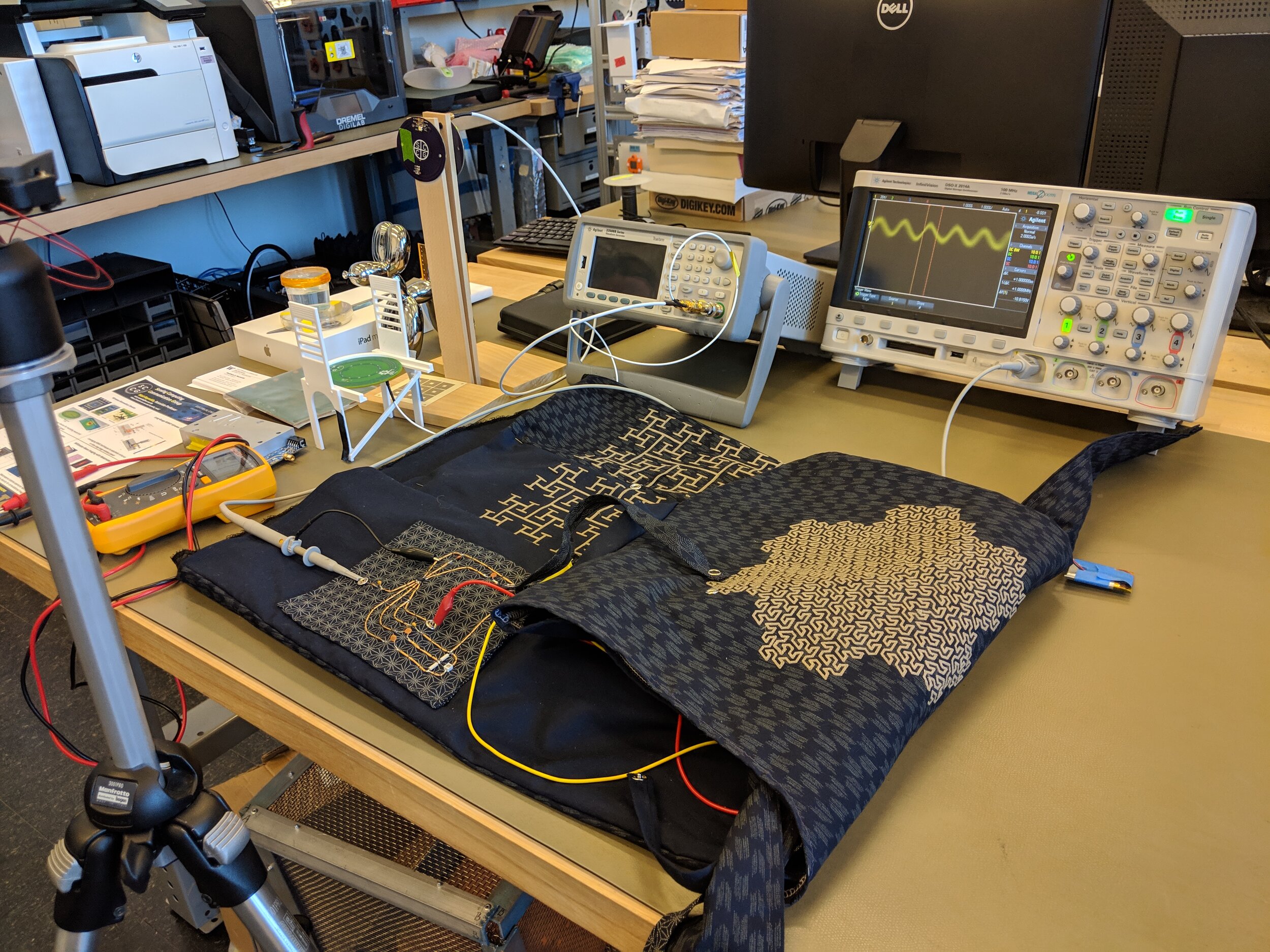
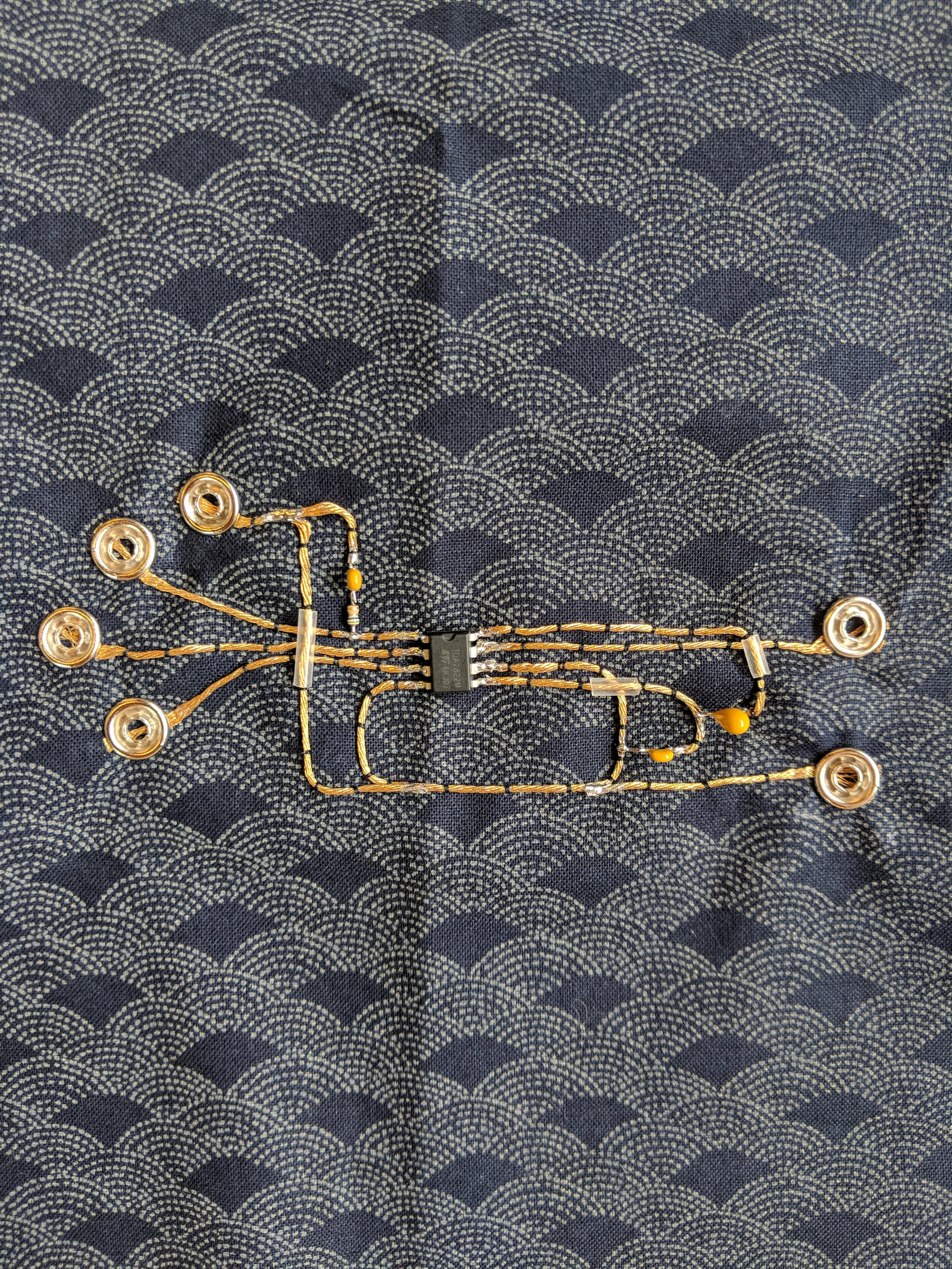
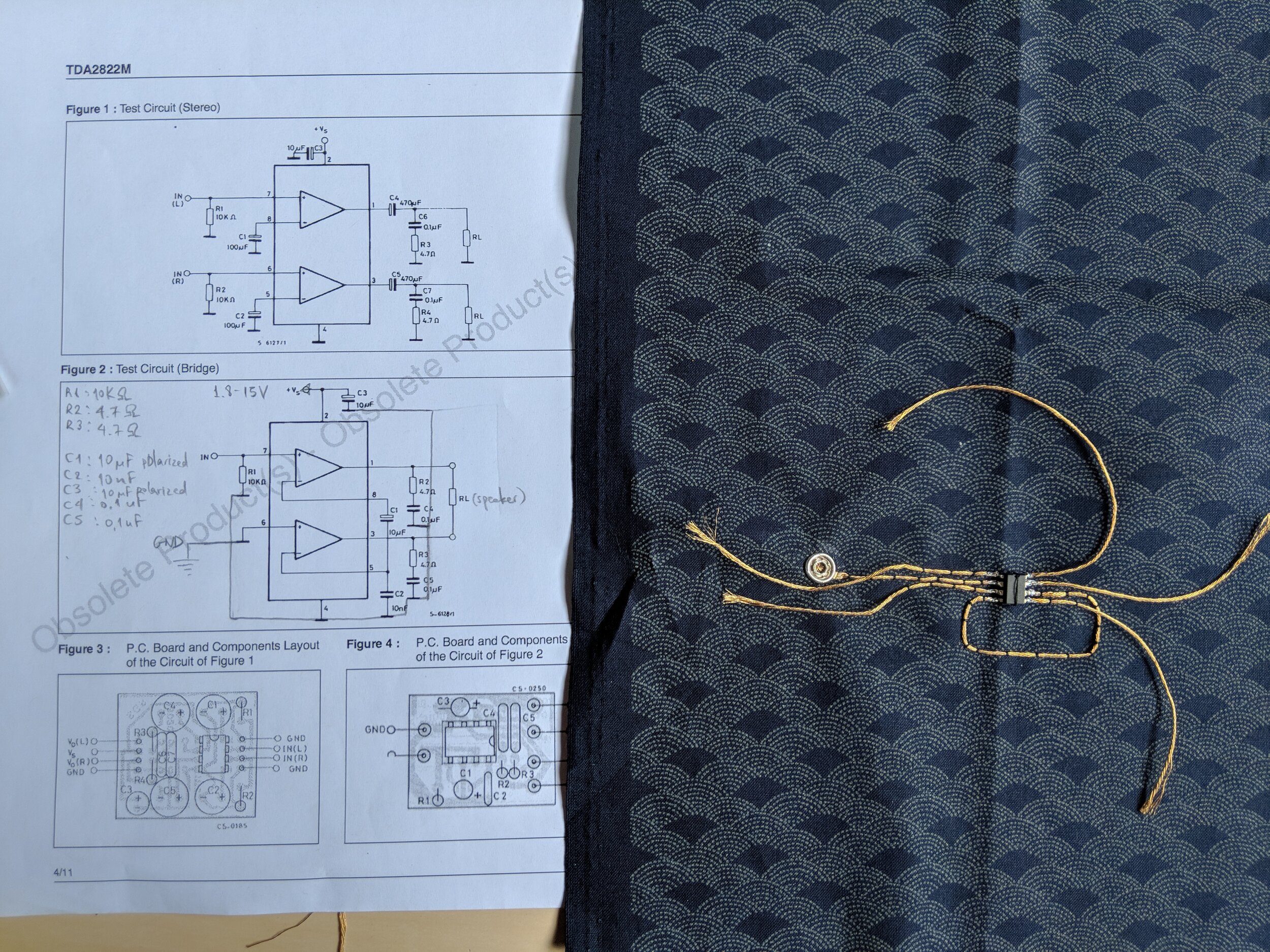


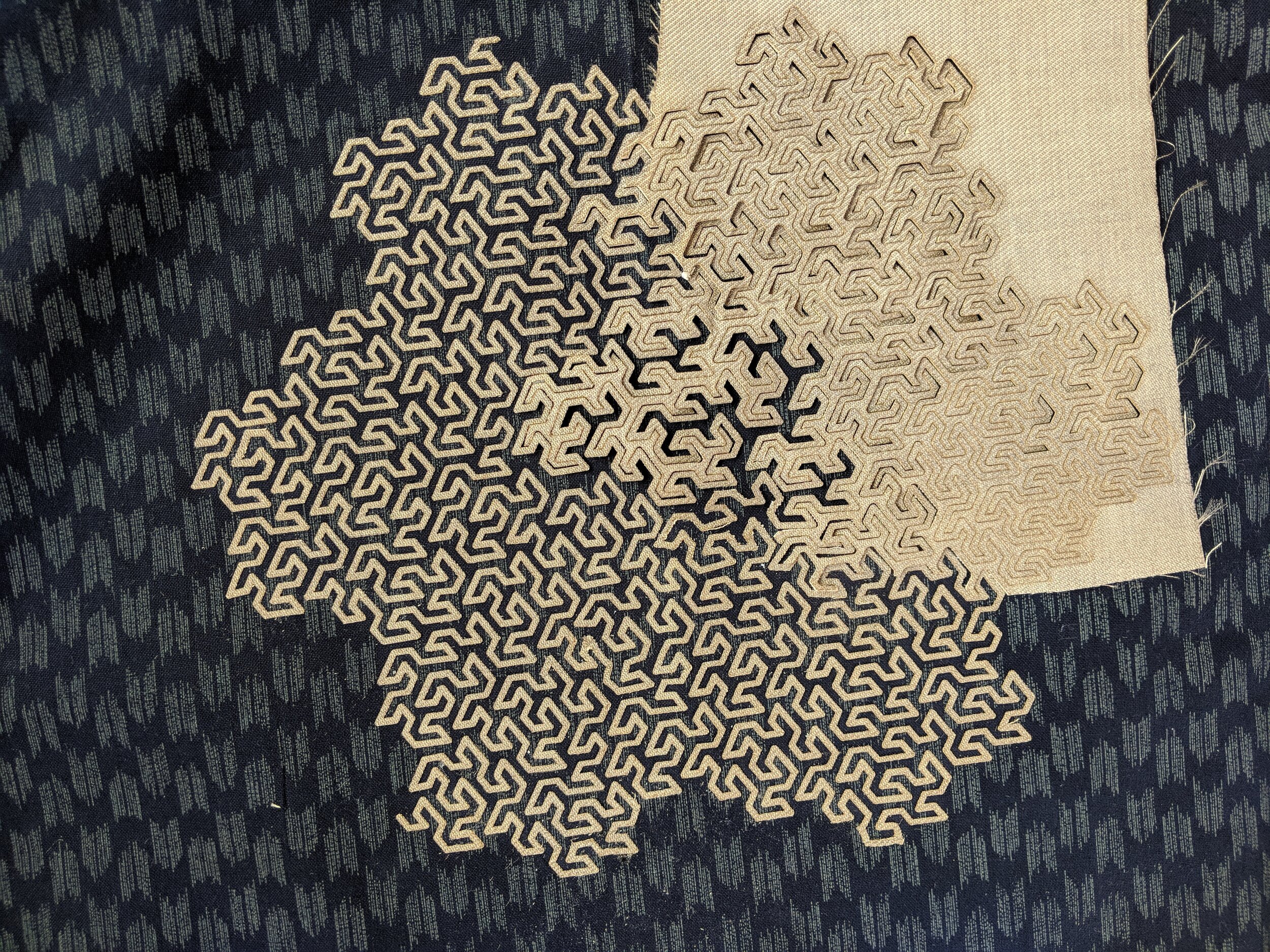
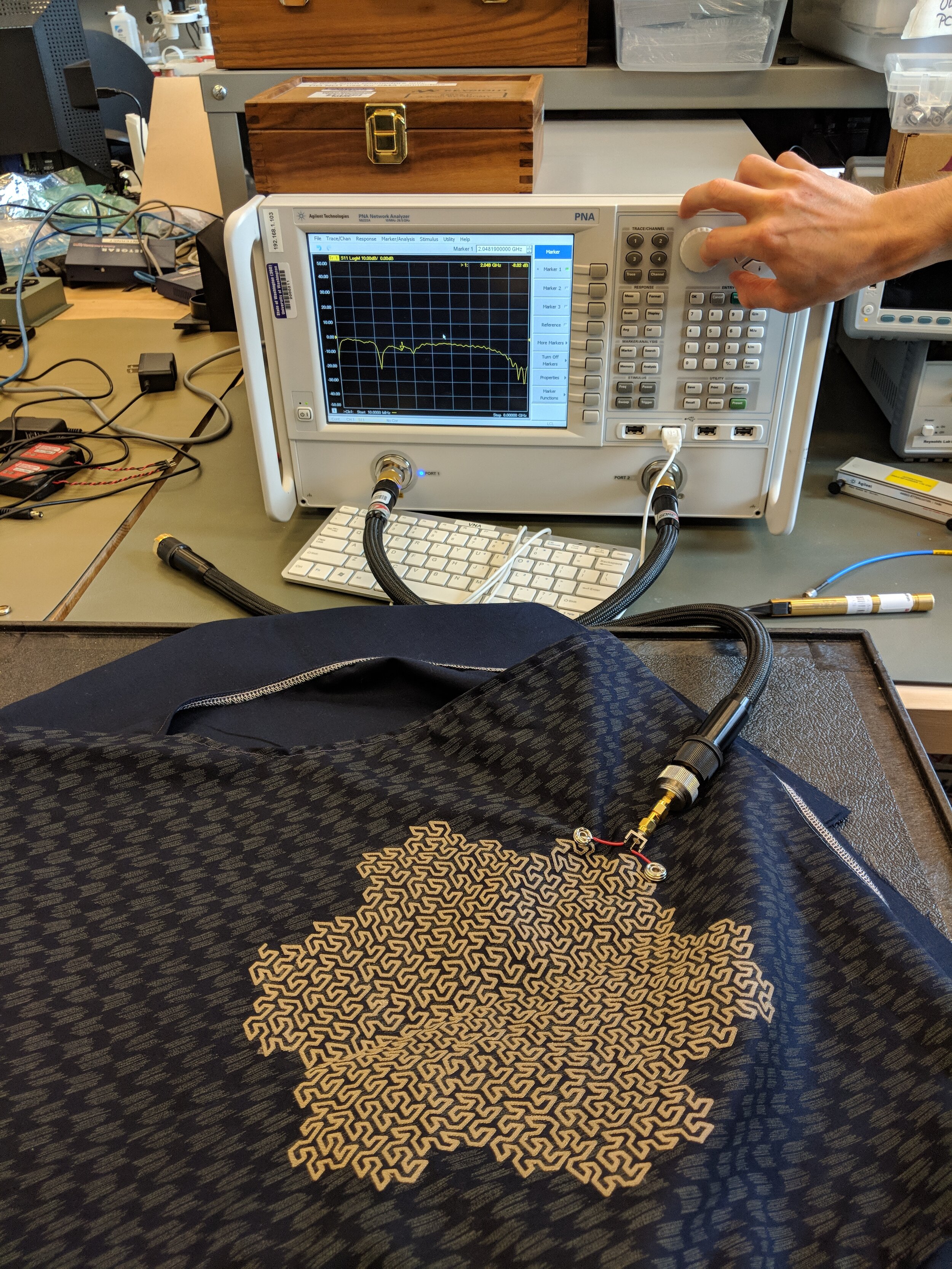
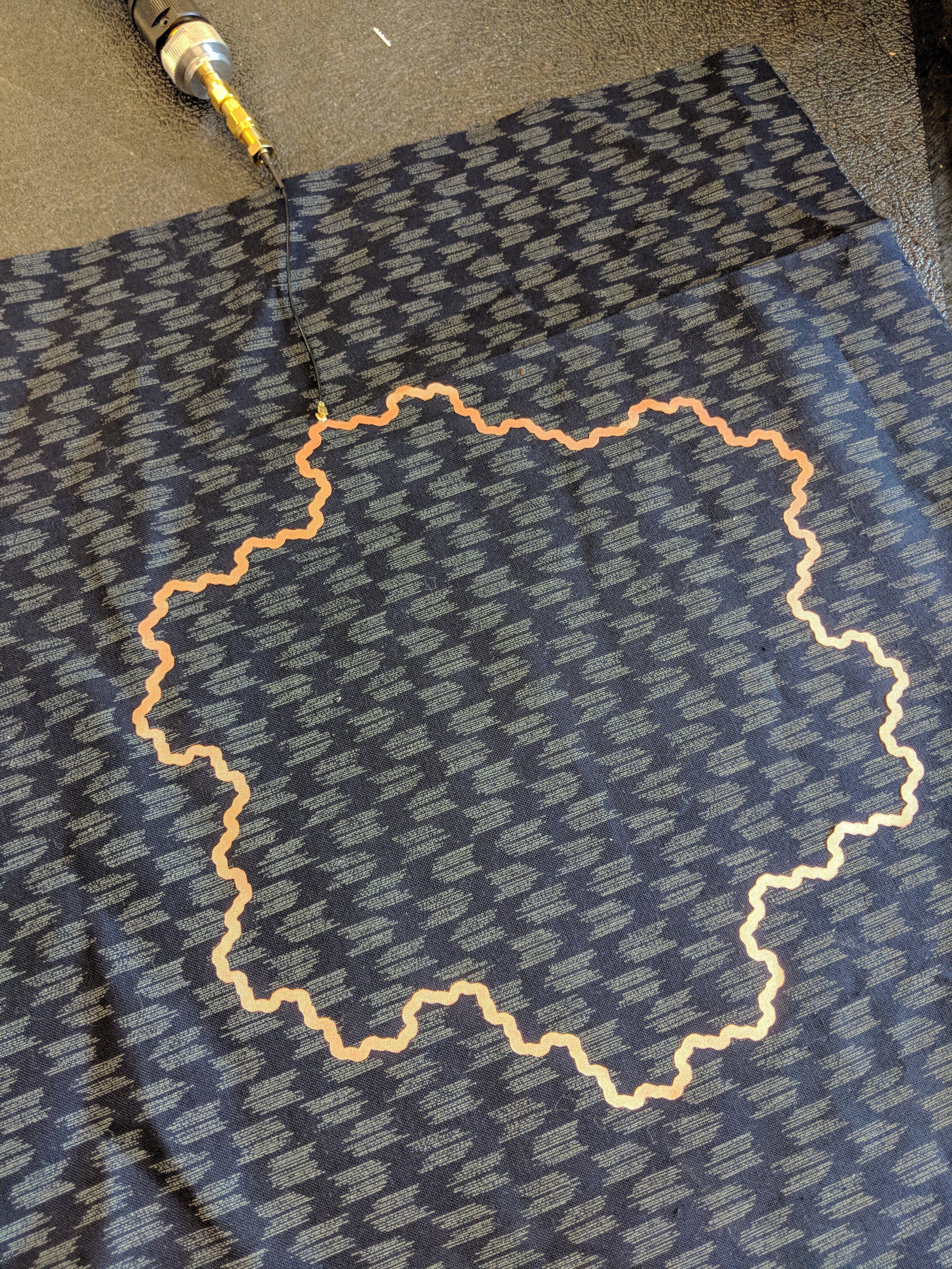

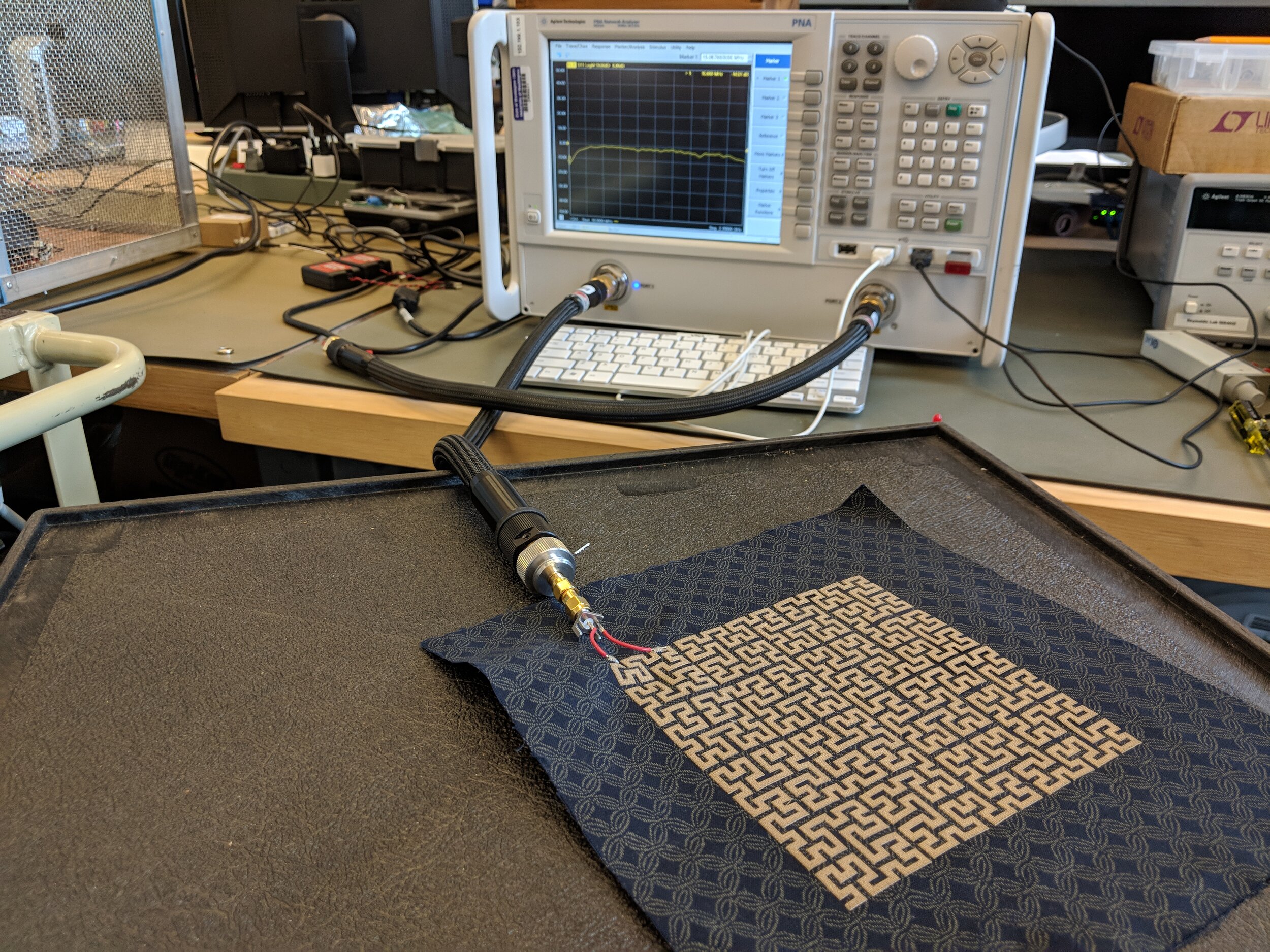
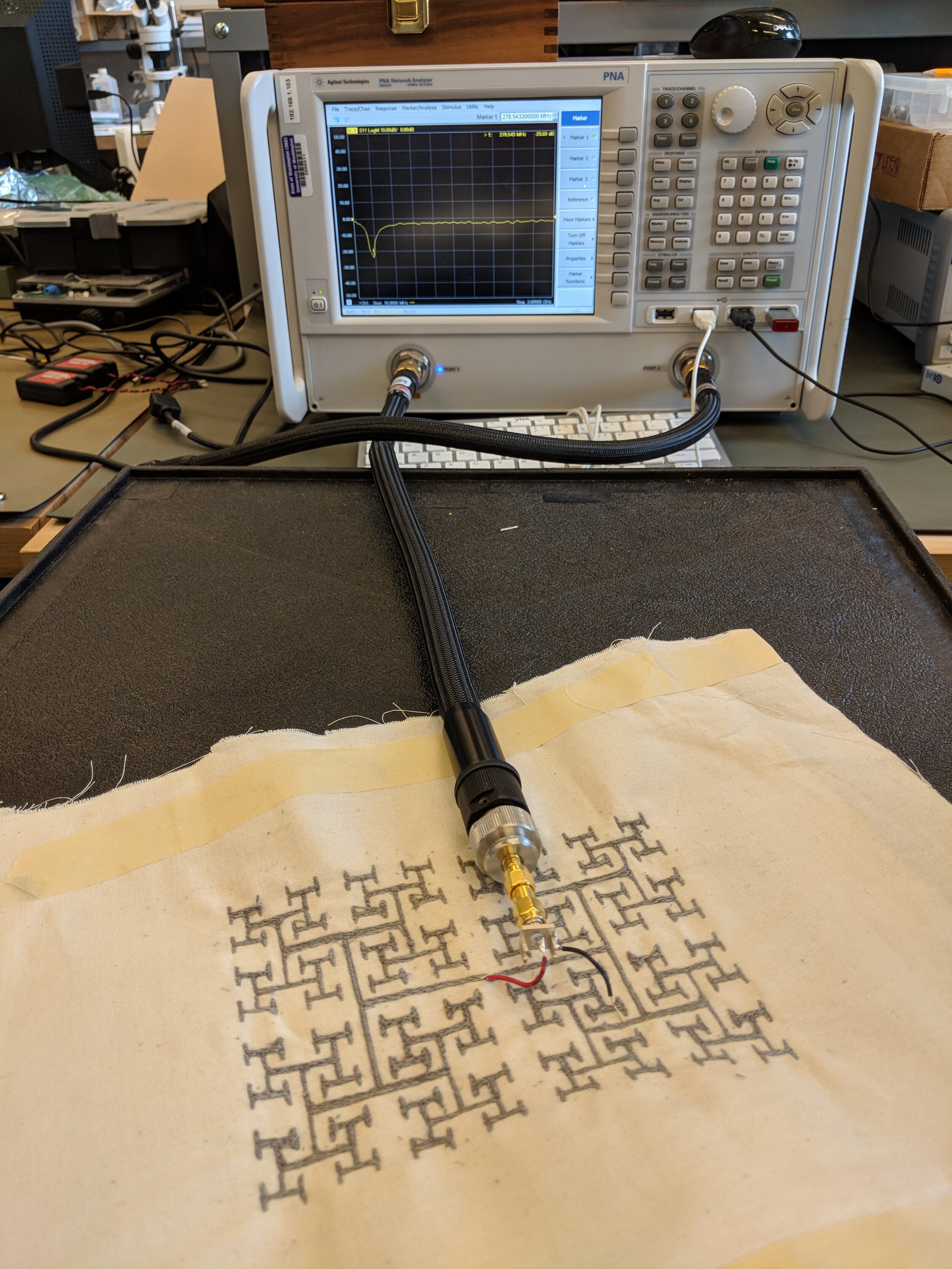




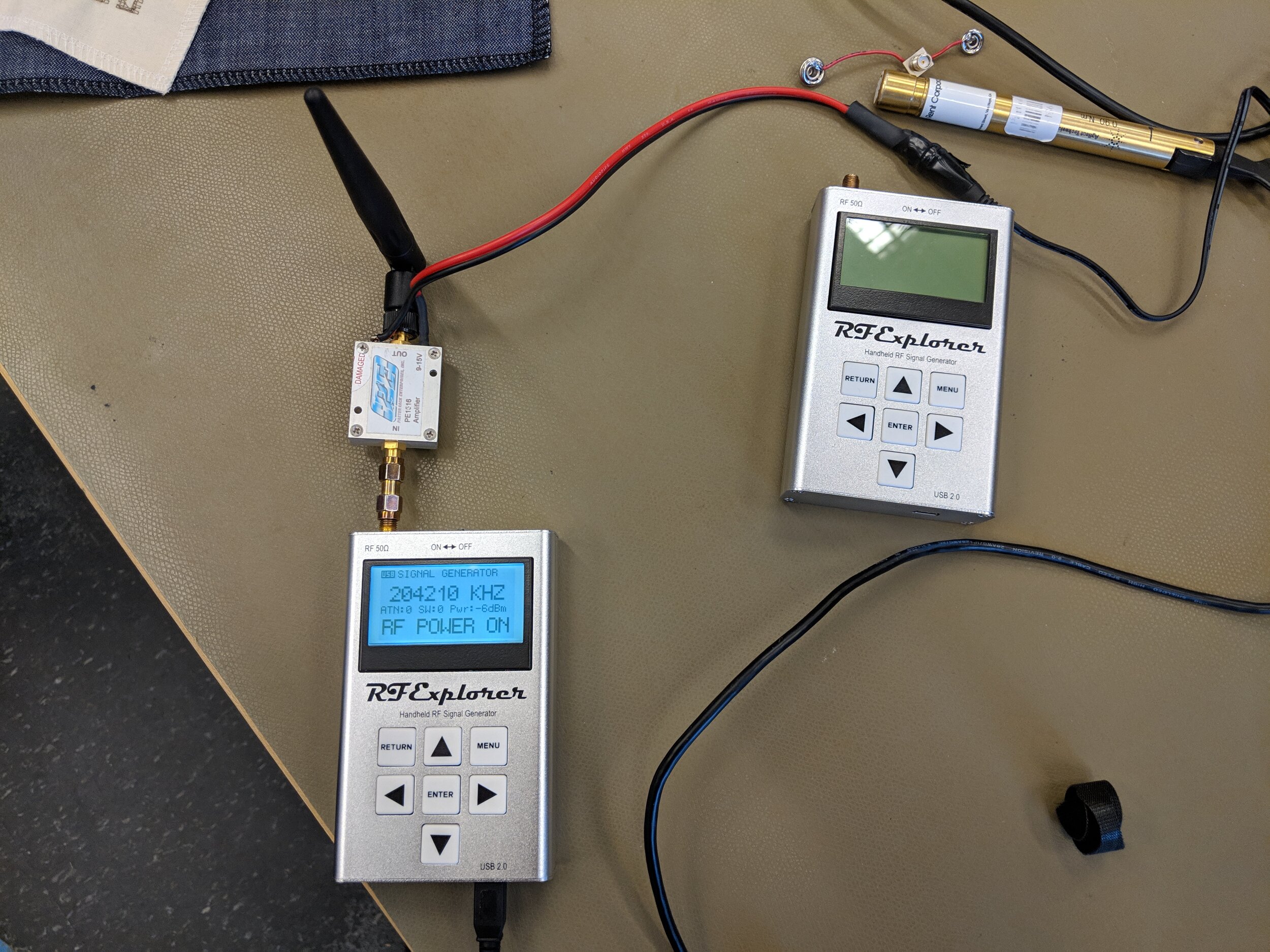

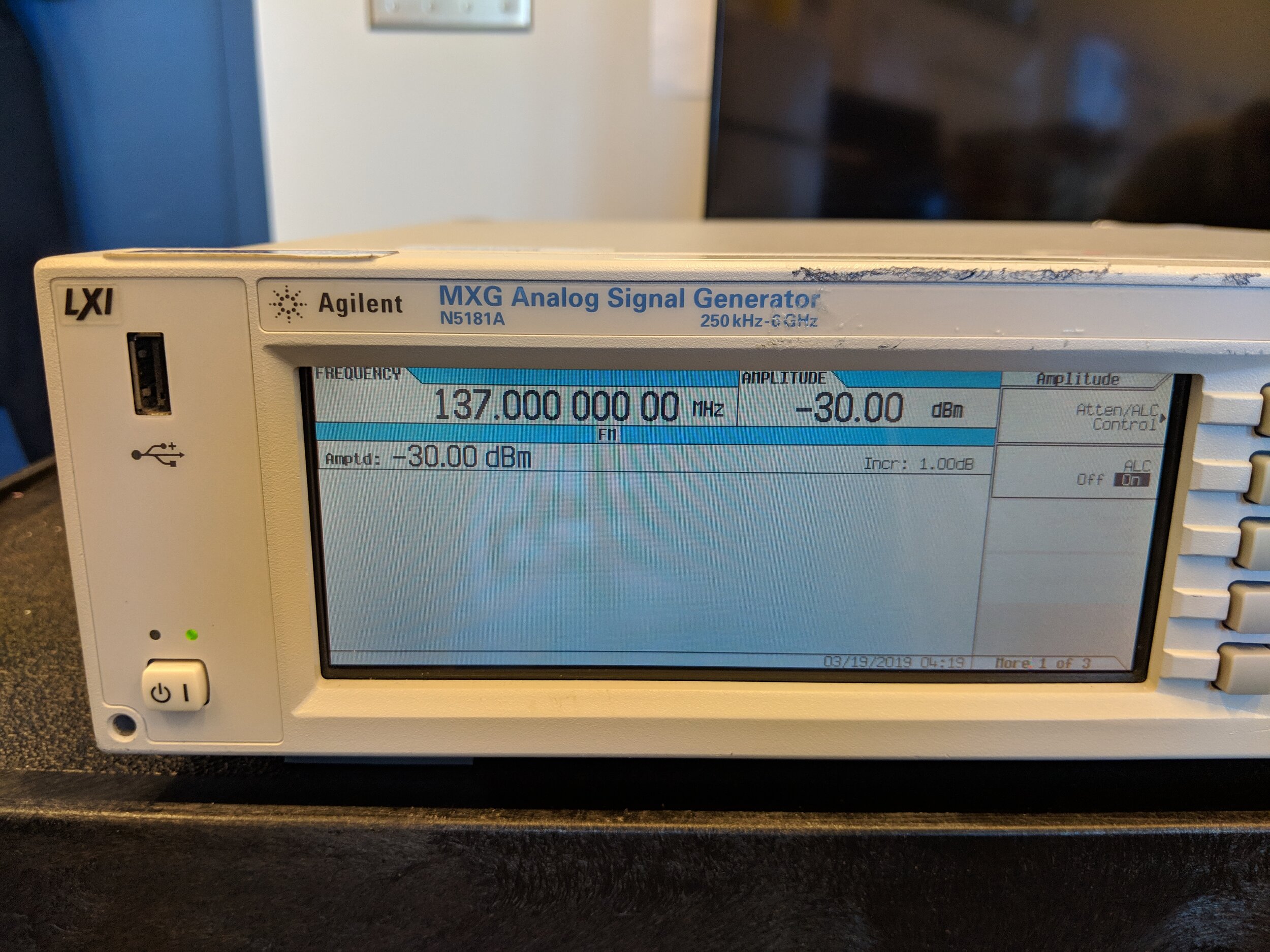


Exhibitions
2021
Having Friends in the Future: 3rd-Nature Fiber Library, National Taiwanese Craft Research and Development Institute (NTCRI), Taipei, Taiwan. Curated by Shih Wei Chieh, Wei Ling Yang, Ling Jung Chu, and Baiyi Sun. (upcoming)
2019
Art and Math, Granoff Center, Providence, Rhode Island, USA.
Signal to Noise Piksel Studio 207, Bergen, Norway. Curated by Tincuta Heinzel.
eTextile Spring Break at The Wassaic Project in New York, USA.
Publications
Psarra, Afroditi. 2020. H-Fractal machine embroidered antenna swatch. Published in “HFF 2020”, edited by Wei-Chieh, Shih. Funded and pertaining to the collection of the National Taiwanese Craft Research and Development Institute (NTCRI). Self-published, limited edition of 16 copies.
Citations
O'Nascimento, Ricardo. 2020. Roupas Inteligentes: Combinando Moda e Tecnologia. Editora Senac São Paulo, p. 262. ISBN 9788539631704.
Lewis, Erin. 2020. Disobedient Antennas: Breaking the Rules of Textile Antenna Design. In Companion Publication of the 2020 ACM Designing Interactive Systems Conference (DIS' 20 Companion). Association for Computing Machinery, New York, NY, USA, 461–464. DOI: https://doi.org/10.1145/3393914.3395843

